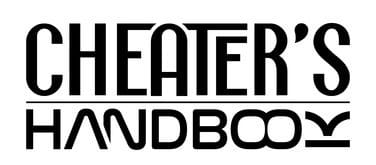Communication During a Hookup

In today’s fast-paced dating landscape, I have observed that hookups have emerged as a prevalent way for individuals to explore connections without the commitment associated with traditional relationships.
While the excitement of casual encounters is certainly appealing, I recognize that navigating the complexities of communication is crucial for ensuring a positive experience. This article seeks to define what a hookup is, explore its various forms, and highlight the importance of effective communication.
Additionally, it offers practical tips to help individuals set boundaries, express their feelings, and ensure that both partners feel respected and understood.
Whether one is new to the scene or looking to refine their skills, this guide serves as a comprehensive resource for mastering the intricacies of communication during a hookup.
What Is A Hookup?
A hookup refers to a casual sexual encounter that generally occurs without the expectation of a committed relationship. This can range from a one-night stand to ongoing interactions marked by physical intimacy, free from the burden of emotional ties.
This arrangement allows individuals to explore their desires and chemistry without societal pressures. Hookups often take place through dating apps or social gatherings and typically involve varying levels of trust, established boundaries, and important considerations regarding personal safety.
What Are The Different Types Of Hookups?
Understanding the various types of hookups is crucial for effectively navigating the complexities of modern relationships and casual connections. Each type differs in terms of emotional involvement, expectations, and the expression of intimacy, ranging from the transient nature of a one-night stand to the more sustained engagement characteristic of friends with benefits or casual dating.
By recognizing these nuances, I can establish appropriate boundaries and communicate my intentions clearly.
1. One-Night Stand
A one-night stand represents a brief sexual encounter between two individuals who do not intend to pursue a deeper relationship. This type of interaction often highlights physical attraction and sexual tension, as both parties engage in the experience for mutual gratification without any emotional entanglements.
It is crucial to communicate intentions and boundaries clearly to ensure emotional safety.
Understanding the dynamics in such encounters reveals various motivations, from the excitement of new experiences to the need for physical release. However, potential risks, such as emotional fallout or health concerns, should not be overlooked. Consent is fundamental; both individuals must be aligned regarding their expectations and limits.
Attraction signals and body language play a significant role in initiating these flings. Subtle gestures, eye contact, and proximity serve as important cues indicating interest and desire. Recognizing and responding to these signals can enhance the connection, ultimately making the encounter more enjoyable and fulfilling.
2. Friends With Benefits
Friends with benefits (FWB) arrangements consist of two friends engaging in sexual activities while preserving their friendship, often without the expectations associated with a traditional relationship. This setup can create a sense of intimacy and shared experiences; however, it necessitates clear boundaries and mutual understanding to effectively manage potential emotional complexities.
It is essential for individuals to be open about their feelings and intentions from the beginning. The significance of communicating boundaries cannot be overstated, as it safeguards the emotional well-being of both parties and helps prevent misunderstandings that could threaten the friendship.
Being emotionally prepared to enter such an arrangement is vital; if one person starts to develop deeper feelings, it is important for them to communicate this openly. Empathy is also crucial, as it allows each individual to provide constructive feedback and support, fostering a healthy dialogue about their expectations and any evolving feelings that may occur.
3. Casual Dating
Casual dating allows individuals to engage in romantic outings without the pressures of commitment, providing an opportunity to explore interests and attractions freely. This approach often involves dating apps and social dynamics that emphasize chemistry over emotional closeness, although some may still seek a deeper connection.
Navigating this landscape can be both exciting and challenging. The potential to meet a diverse range of people allows for exposure to various personalities and dating styles, which can be quite enriching.
It’s essential to maintain open lines of communication. This practice not only ensures that both parties are aligned regarding their intentions but also aids in managing expectations and emotional availability.
Understanding social cues and employing effective engagement strategies can significantly enhance these dating experiences. By recognizing the appropriate moments to be playful versus when to engage in more meaningful conversations, individuals can create a more fulfilling atmosphere, regardless of whether they are seeking lighthearted fun or a potential partner.
Why Is Communication Important During A Hookup?
Effective communication is essential during a hookup, as it establishes consent, clarifies expectations, and sets boundaries that ensure both parties feel comfortable and safe. Miscommunication can lead to misunderstandings, emotional disconnection, and negative experiences, making it crucial to engage in transparent dialogue about intentions and feelings.
Plus verbal clarity, being attuned to non-verbal cues can significantly enhance the interaction, as body language often conveys important messages. Active listening is equally important; it enables individuals to genuinely understand each other’s desires and boundaries, fostering a deeper connection.
Emotional intelligence plays a vital role here; being aware of one’s own feelings as well as those of the other party can help prevent awkward situations and contribute to a more enjoyable experience. Ensuring clarity not only aids in navigating physical intimacy but also nurtures respect and empathy, ultimately enhancing overall satisfaction for both individuals involved.
How To Communicate Effectively During A Hookup?
Communicating effectively during a hookup involves a blend of clarity, empathy, and active listening to navigate the complexities of attraction and intimacy.
By establishing clear boundaries and openly discussing expectations, I can help create a safe environment for genuine connection while reducing the risk of miscommunication and emotional distress.
1. Set Boundaries And Expectations
Setting clear boundaries and expectations is essential in any hookup scenario, as it helps define the relationship’s parameters and ensures that both parties are aligned. This involves openly discussing desires, limitations, and mutual respect to foster trust and emotional safety.
Recognizing the significance of these conversations can greatly enhance the experience for everyone involved. I recommend starting with a calm discussion in a comfortable setting, where both individuals can express their thoughts freely. It is beneficial to frame personal boundaries positively, emphasizing what each person values in the relationship rather than focusing solely on restrictions.
Emotional intelligence is crucial in this context; actively listening to each other’s concerns and validating feelings can create an atmosphere of understanding. It is also important to maintain clarity by summarizing key points during the conversation, which helps prevent misunderstandings and paves the way for a more enjoyable and respectful interaction.
2. Use Clear And Direct Language
Utilizing clear and direct language during a hookup is essential for preventing misunderstandings and fostering transparent communication about desires and limitations. This strategy promotes emotional honesty and can lead to a more comfortable and engaging interaction between partners.
By openly expressing intentions, individuals can cultivate an understanding environment that encourages trust. Posing questions like,
“What are you comfortable with?” or “Are there any boundaries you’d like to establish?“
can significantly enhance communication. Additionally, using phrases such as,
“I really enjoy this, but I want to ensure you’re okay with it too,”
can create a sense of safety.
These practices not only elevate the overall experience but also contribute to a foundation of emotional safety, allowing both partners to feel more relaxed and valued in their interactions.
3. Practice Active Listening
Active listening is an essential skill during hookups, as it enables me to understand and respond effectively to my partner’s verbal and non-verbal cues. By engaging in active listening, I demonstrate empathy and foster a stronger connection while navigating the complexities of attraction and intimacy.
To enhance this vital practice, I can incorporate several techniques that significantly improve my interactions. For instance, maintaining eye contact conveys genuine interest and attentiveness, creating a more inviting atmosphere for open conversation. Subtly mirroring body language signals rapport, helping my partner feel more at ease and understood. Providing thoughtful feedback, whether through verbal affirmations or reflective summaries, reinforces the notion that their thoughts and feelings are valued.
By consistently applying these methods, I can cultivate emotional intelligence, ultimately leading to deeper relationships and more fulfilling experiences.
4. Check In With Each Other
Regularly checking in with each other during a hookup is crucial for maintaining open communication and ensuring that both parties feel comfortable and respected. This practice allows individuals to express their feelings and receive feedback, contributing to emotional safety and mutual understanding.
Engaging in this dialogue can take various forms, ranging from light-hearted questions like, “How’s this feeling for you?” to more direct inquiries such as, “Is there anything you’d like to change?” These questions not only promote a sense of safety but also encourage authentic responses, enabling each person to articulate their needs and boundaries.
By prioritizing emotional safety during intimate moments, I can enhance the overall experience, fostering an environment where vulnerability is embraced and mutual pleasure is achieved. This open dialogue serves as a foundation for deeper connections that extend beyond the physical, reinforcing trust and respect in the relationship.
What Are The Risks Of Poor Communication During A Hookup?
I recognize that poor communication during a hookup can lead to a range of risks, including miscommunication, emotional disconnection, and even issues surrounding consent.
When expectations are not clearly conveyed, the likelihood of misunderstandings and emotional distress increases, which can adversely affect the experiences of everyone involved. It’s essential to prioritize clear communication to foster a positive and respectful interaction.
1. Miscommunication And Misunderstandings
Miscommunication and misunderstandings can easily arise during hookups, often resulting in confusion and emotional distress. This situation frequently stems from the misinterpretation of social cues and insufficient engagement strategies, underscoring the importance of clear communication and active listening.
For example, a flirty comment might be overly taken to heart or completely overlooked, leaving one party uncertain about the other’s intentions. Additionally, when discussing boundaries, vague language can lead to assumptions that do not align with one’s expectations. Body language is also significant; a lack of eye contact can be perceived as disinterest, while enthusiasm from one person may not necessarily indicate mutual desire.
Therefore, investing time in clarifying intentions, seeking feedback, and addressing uncertainties is essential for fostering a more respectful and enjoyable connection. This proactive approach can ultimately minimize the potential for emotional turmoil.
2. Emotional Disconnection
Emotional disconnection can pose a significant risk during hookups, especially when communication is insufficient. This detachment can impede intimacy and adversely affect relationship dynamics, making it essential to foster an environment of trust and openness.
While physical attraction may spark initial interest, a lack of meaningful dialogue can create a chasm between partners. Factors such as differing expectations, societal pressures, and personal insecurities often exacerbate this disconnect.
Understanding the crucial role of emotional intelligence in relationships is vital. It is important to articulate feelings clearly and practice active listening, which helps establish a stronger bond. Addressing vulnerabilities openly allows for deeper connections, enabling partners to navigate intimacy with greater ease and understanding.
By prioritizing effective communication, I can mitigate risks and cultivate a more fulfilling experience in my relationships.
3. Consent Issues
Consent issues can arise when communication is unclear or when one party feels pressured during a hookup. I find that establishing clear communication and ensuring both parties are comfortable can greatly reduce the likelihood of consent-related problems, fostering emotional safety and mutual respect.
Engaging in open discussions about desires, boundaries, and expectations beforehand can create a more relaxed atmosphere. It is crucial for each individual to feel give the power toed to express their thoughts without fear of judgment, which promotes transparency.
Asking open-ended questions about comfort levels and encouraging affirmative responses can further clarify intentions. During the interaction, regularly checking in with each other and actively listening can help navigate any uncertainties that may arise, ensuring an ongoing dialogue that respects personal limits and establishes a foundation of trust.
How To Handle Communication Breakdowns During A Hookup?
Managing communication breakdowns during a hookup necessitates a proactive approach, emphasizing the importance of reassessing the situation and addressing any misunderstandings or discomfort. By cultivating an environment of vulnerability and openness, I can effectively navigate these challenges while ensuring emotional safety for both parties involved.
1. Take A Break And Reassess
Taking a break during a hookup provides a valuable opportunity for both parties to reassess their emotions and comfort levels. This pause allows for open communication about any concerns or discomfort, helping to prevent miscommunication and ensuring emotional readiness.
During this time, I find it essential to reflect honestly on my feelings and recognize any hesitations or anxieties that may have arisen. It’s important to feel safe expressing my perspective, ensuring that we are aligned regarding our desires and intentions. Engaging in a candid discussion not only clarifies expectations but also fosters trust, leading to a more meaningful connection.
Addressing any concerns in a non-judgmental atmosphere enhances our understanding of each other’s boundaries, ultimately contributing to a more fulfilling experience for both individuals involved.
2. Use ‘I’ Statements To Express Your Feelings
‘I‘ statements serve as an effective tool for expressing feelings and concerns during a hookup, as they focus on personal experiences instead of assigning blame or criticism to the other person. This approach fosters emotional clarity and vulnerability, ultimately enhancing communication and understanding.
By employing ‘I‘ statements, I can articulate my feelings in a non-confrontational manner, paving the way for a more meaningful dialogue. For example, instead of saying,
“You make me feel anxious when you don’t text back,” I might say, “I feel anxious when I don’t receive a text back.”
This subtle shift in language minimizes defensiveness and creates an opportunity for the other person to respond with empathy.
Additionally, ‘I‘ statements help clarify personal needs. For instance, expressing, “I need reassurance when things are unclear,” can lead to a more satisfying interaction and a better mutual understanding of each other’s emotional landscapes.
3. Seek Outside Help If Needed
When communication issues arise during a hookup that cannot be resolved between the parties involved, I find that seeking outside help can be incredibly beneficial. This may involve discussing the situation with a friend or consulting a professional who can provide valuable insights on navigating the complexities of relationships and intimacy.
By enlisting the support of someone knowledgeable, I can gain new perspectives that facilitate constructive dialogue and emotional healing. It’s essential to assess the type of help needed—whether it’s a casual conversation with a trusted friend or a more structured approach with a therapist—depending on the severity and nature of the issues at hand.
Prioritizing emotional safety is crucial, as it ensures that the environment created for these discussions fosters honesty and understanding, allowing everyone involved to express themselves freely. This process not only helps in addressing immediate concerns but also promotes healthier relationship patterns in the future.
What Are Some Tips For After-Hookup Communication?
After-hookup communication is essential for maintaining transparency and ensuring that both parties feel respected and understood. This phase provides an opportunity for individuals to articulate their intentions, address any concerns, and reinforce boundaries, all while fostering emotional safety and mutual understanding.
1. Be Honest About Your Intentions
Being transparent about my intentions after a hookup is crucial for clarity and emotional honesty. It sets the stage for future interactions and helps prevent misunderstandings. By openly discussing what I want moving forward, I can foster a sense of transparency and mutual respect.
This conversation may involve sharing whether I am seeking a casual relationship, friendship, or something more serious. For example, I could initiate this dialogue by asking, “How do you feel about what happened between us?” This straightforward question can lead to deeper insights into each person’s feelings.
Emotional honesty is essential for nurturing trust, ensuring that both parties are on the same page. By expressing vulnerabilities, such as the fear of rejection or a desire for connection, I create an environment that encourages genuine understanding. This foundation can lead to healthier relationship dynamics, where both parties feel valued and respected.
2. Respect Each Other’s Boundaries
Respecting each other’s boundaries after a hookup is essential for maintaining emotional safety and fostering a healthy dynamic. This means acknowledging the limits that were established during the encounter and ensuring that both parties feel comfortable expressing their feelings.
Open communication is pivotal in this process. I believe both individuals should feel give the power toed to share any discomfort or changes in their emotions that may arise after the experience. It is crucial to engage in honest conversations about expectations moving forward, whether that involves discussing exclusivity or simply checking in on how each person is feeling.
By actively listening and validating each other’s feelings, I can contribute to strengthening trust and mutual understanding. Prioritizing emotional safety allows both partners to navigate the complex dynamics that follow a hookup, ensuring that they respect one another’s boundaries while fostering a supportive environment.
3. Discuss Any Concerns Or Issues
Discussing any concerns or issues that arise after a hookup is essential for achieving emotional clarity and ensuring that both parties feel heard. This open dialogue helps navigate potential misunderstandings and reinforces a sense of safety and mutual respect.
By approaching the conversation with a mindset open to understanding each other’s perspectives, I can lay the groundwork for healthier connections. For instance, I might start by asking, “How did you feel about what happened?” or “Is there anything that you think we should talk about moving forward?” These prompts encourage honest reflection and insights, helping to clarify intentions and emotions.
When I share feedback constructively, it not only strengthens the relationship but also builds trust and fosters a deeper connection, setting a positive tone for future interactions.
4. Practice Safe Sex And Communicate About Protection
Practicing safe sex and effectively communicating about protection is a fundamental aspect of responsibility in any hookup scenario. By engaging in open discussions about safety measures, I can promote mutual understanding and ensure emotional safety for both parties involved.
These conversations foster an atmosphere of trust, enabling both individuals to express their desires and boundaries without the fear of judgment. While initiating such discussions may seem daunting, adopting a simple and straightforward approach can alleviate tension. For instance, starting with a question like,
“How do you feel about safe sex?“
can lay the groundwork for an honest dialogue.
It is essential to approach this topic with sensitivity and patience, ensuring that both parties feel valued and heard. Being clear about expectations not only enhances physical safety but also strengthens emotional connections, ultimately enriching the overall experience for everyone involved.
Frequently Asked Questions
What is the importance of communication during a hookup?
Communication is essential during a hookup because it allows both partners to discuss their expectations, boundaries, and desires. It also helps to establish consent and ensure a safe and enjoyable experience for both parties.
How can I communicate my boundaries during a hookup?
It’s important to be clear and direct when communicating your boundaries during a hookup. You can use phrases like, “I’m not comfortable with that” or “Let’s stick to this for now.” Remember that your boundaries are valid and should be respected.
What if my partner doesn’t respect my boundaries during a hookup?
If your partner doesn’t respect your boundaries, it’s important to speak up and reiterate your boundaries. If they continue to disregard them, it may be best to end the hookup and find a partner who respects your boundaries and consent.
How can I ensure consensual communication during a hookup?
Consensual communication means both partners are actively participating and agreeing to each action. This can be achieved by regularly checking in with your partner, using clear and direct communication, and respecting each other’s boundaries.
What if my partner and I have different communication styles?
It’s common for individuals to have different communication styles, and this can also be true during a hookup. The key is to be open and understanding of each other’s preferences and finding a compromise that works for both partners.
Can we communicate with nonverbal cues during a hookup?
While verbal communication is essential during a hookup, nonverbal cues can also play a role in communicating consent and desire. However, it’s important to always check in with your partner and get verbal confirmation before proceeding with any actions.
My Go-To Platform for Flings, Affairs, and MILFs
Looking for top-notch flings, affairs, or MILFs? Skip the rest, AdultFriendFinder is the gold standard. Zero bots, zero fakes—just real connections. I've scored big in multiple cities. Sign up now, it's FREE!









